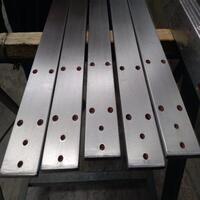1. Introduction
Ever walked past a sleek modern building with shimmering walls or spotted a rustic home wrapped in weathered steel panels? Chances are, you’ve seen metal clad in action. But what exactly does ‘metal clad’ mean—and why is it so widely used across construction, manufacturing, and even electrical systems?

In simple terms, ‘metal clad‘ refers to any structure, surface, or component that’s covered or layered with metal for protection, aesthetics, or performance. Whether it’s a metal clad roof shielding your home from rain, a corten steel facade adding urban charm, or aluminum clad wire safely channeling electricity, this versatile technique combines durability with design.
2. What Does ‘Metal Clad’ Mean?
The phrase ‘metal clad meaning’ often confuses newcomers—but it’s straightforward once broken down. ‘Clad’ means to cover or sheath something, so ‘metal clad’ describes an object coated or wrapped in metal. Similarly, ‘clad metal meaning’ refers to composite materials where one metal is bonded to another (like stainless clad aluminum or titanium clad steel) to merge desirable properties—corrosion resistance, strength, conductivity, or cost-efficiency.
You’ll see terms like ‘metalclad’ (often written as one word in technical contexts) used interchangeably, especially in electrical and industrial sectors. For example, metal clad electrical wire features insulated conductors encased in a flexible metal armor for safety and durability.
3. Common Types of Metal Cladding in Architecture
Metal cladding isn’t just functional—it’s a design powerhouse. Architects and builders choose from a range of options depending on climate, budget, and visual goals.

- Metal clad wall systems include corrugated steel facade panels, vertical standing seam metal siding, and sleek standing seam facade designs that offer clean lines and weather resistance.
- Popular choices like corten steel siding bring a bold, rust-like finish that ages beautifully—though corten siding cost can be higher than standard options.
- Zinc metal siding and zinc clad roof systems provide longevity with minimal maintenance, while copper siding develops a distinctive patina over time.
- Aluminum clad steel and aluminium clad sheet are lightweight yet strong, ideal for everything from metal clad houses to commercial metal clad buildings.
Systems like PAC CLAD standing seam roof, PAC CLAD coping, and PAC CLAD column covers offer premium pre-finished solutions, often using Colorbond standing seam or similar coated steel for vibrant, fade-resistant exteriors.
4. Industrial and Structural Applications
Beyond facades and roofs, ‘clad metals’ play a critical role in heavy industry. Clad steel—such as aluminum clad stainless steel or stainless clad aluminum—combines the corrosion resistance of stainless steel with the light weight or cost benefits of other metals.
Specialized alloys like 2024 T3 clad or 7075 T6 clad aluminum are used in aerospace, while copper nickel clad and cupro nickel clad serve marine environments. In high-wear settings, chrome carbide overlay plates protect machinery from abrasion.
Thick steel plate, mild steel plate, and alloy plate types—including 6061 T6 aluminum plate, 316 stainless steel plate, and Inconel 625 plate—are selected based on strength, temperature tolerance, and chemical resistance. You’ll find these in boiler plate steel, base plates, and structural supports.

For practical needs, perforated plate, diamond plate steel, and aluminum tread plate add slip resistance and visual texture to walkways, trucks, and industrial flooring.
5. Electrical and Insulation Uses
Not all metal clad applications are visible. Metal clad wire—also called MC cable—is a staple in commercial and residential wiring. It includes aluminum clad steel wire, copper clad wire (Cu clad wire), and aluminum clad wire, all protected by a metal sheath that resists damage and electromagnetic interference.
Similarly, aluminum clad pipe insulation wraps HVAC or plumbing lines to reflect heat and prevent condensation. This ‘metal clad insulation’ boosts energy efficiency in both homes and factories.
6. Choosing the Right Metal Clad Type
With so many options—from zinc clad dormer accents to steel clad sheds—it’s essential to match material to purpose. Consider:
- Climate: Coastal areas benefit from stainless steel or zinc due to salt resistance.
- Aesthetics: Corten steel plate offers raw industrial appeal; polished stainless metal sheet gives a futuristic look.
- Budget: While corten steel siding cost may be steep, exterior corrugated metal siding or metal weatherboard can be more affordable alternatives.
- Maintenance: Copper and zinc age gracefully; painted systems like Colorbond may need recoating over decades.
Always verify local codes—especially when using metal clad electrical wire in commercial buildings in states like Pennsylvania, where regulations dictate acceptable installations.
7. Conclusion
From the gleam of a zinc facade to the rugged reliability of a steel clad building, metal clad solutions blend form and function across countless industries. Whether you’re designing a metal clad house, specifying clad steel for a refinery, or installing metal clad wire in a retrofit project, understanding the range of materials—from aluminum clad sheet to titanium clad composites—ensures smarter, longer-lasting results. As technology advances, expect even more innovation in alloy clad systems, sustainable finishes, and modular metal cladding that pushes architectural boundaries.
Our Website founded on October 17, 2012, is a high-tech enterprise committed to the research and development, production, processing, sales and technical services of ceramic relative materials such as What. Our products includes but not limited to Boron Carbide Ceramic Products, Boron Nitride Ceramic Products, Silicon Carbide Ceramic Products, Silicon Nitride Ceramic Products, Zirconium Dioxide Ceramic Products, etc. If you are interested, please feel free to contact us.
